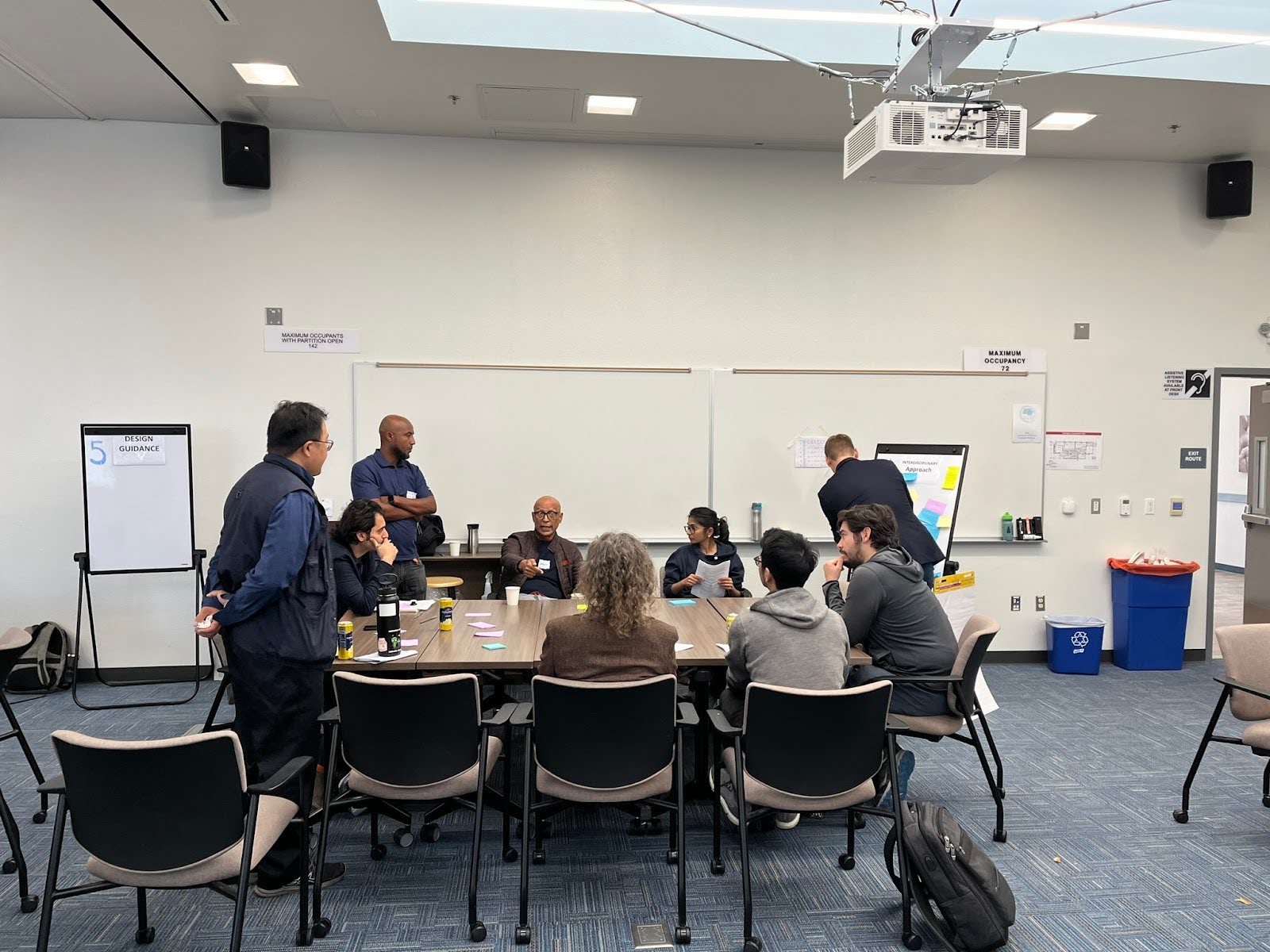The Coastal Adaptation Engineering Workshop was held to advance attendee knowledge of the opportunities and challenges of applying nature-based solutions (NBS) to mitigate flooding of transportation infrastructure. The workshop fostered an interagency dialogue between the California Department of Transportation (Caltrans) and the Coastal Commission, aimed at increasing the understanding and potential for application of nature-based solutions by Caltrans.

Sixty-five Caltrans experts attended the meeting from a variety of disciplines, including: Advanced Planning, Environmental Engineering, Landscape Architecture Design, Hydraulics, Water Quality, Geo-Technical, and Maintenance Program Leads. Coastal managers and planners, scientists, engineers, and policy specialists also attended the event and joined in on the conversation. The workshop focused on six breakout group “Challenges” that are seen as barriers to innovative coastal projects that consider natural approaches. These six challenges include:
- Coastal Fluency – Coastal work involves unique engineering concepts, regulations, and other contexts. Coastal work is a small subset of the overall transportation workload, and the opportunity to obtain expertise, training, or continually apply and advance skillsets can be limited for transportation agencies.
- Project Footprints – Some funding programs fundamentally require that project work occur within the right of way, limiting where NBS can be placed (e.g., SHOPP Program in CA). Many locations located along tidally influenced locations are grappling with physical, adjacent land-use, jurisdictional, or funding constraints.
- Project Scale – Caltrans must deliver many different types of projects, some of which are relatively small in scale (i.e. culvert replacement, rumble strip, bike lane), and by their very nature are limited in terms of cost, scope, and schedule for what they can consider. In other words, they might not be an appropriate avenue from which to implement a long-term, corridor-wide resilience investment strategy that also incorporates natural habitat considerations.
- Interdisciplinary Collaboration – Like any organization, it takes extra work, time, and leadership to obtain cross-functional expertise. At the most basic level, this has been traditionally inadequately resourced in terms of time and money, especially at the beginning stages of project delivery. “Silo-ing” is the norm, as experts work within offices based on uniform skillsets. Collaboration with other disciplines occurs only on project teams that don’t engage outside of a specific project.
- Design Guidance – There is a lack of guidance for nature-based approaches and less well-known design standards or performance expectations (i.e., demonstrated amount of protection for the roadway “prism”). The prism is the entire area previously disturbed during road construction and not just the roadway itself.
- Funding – Using NBS as a strategy to address erosion or flooding often means building out a beach, or wholesale relocation of the infrastructure landward to get enough space, as we have already built on the natural system. That’s often more expensive in the near-term, but may be less expensive over time when considered in conjunction with ongoing repairs and maintenance associated with traditional hardening approaches. Annual budgets make breaking this maladaptation cycle difficult.
The research team, Caltrans, and the California Coastal Commission are working together to address some of these challenges and identify innovative solutions. For example, navigating permitting was one of the key challenges highlighted in executing coastal projects. The research team recently released the “Efficient Permitting Roadmap for Coastal Sediment Management”, a first of its kind manual that shows users how to navigate the permit review process in the Caltrans District 4 region. The manual focuses on projects involving sediment management, including everything from tidal marsh, beach, or dune restoration; to sediment storage and beneficial use of dredged material. These are the innovative types of projects Caltrans hopes to implement more often.
The workshop was led by a NOAA supported research team that included Point Blue Conservation Science and the United States Geological Survey (USGS), in collaboration with Caltrans, the Coastal Commission, and the Greater Farallones Association. This workshop is part of a larger effort to model the effects of sea level rise under future adaptation scenarios, funded by the NOAA’s Effects of Sea Level Rise program. The workshop was held on October 26 at the Oakland District 4 office.
The project is led by Wendy Kordesch of the Greater Farallones Association (GFA) and Max Delaney of the Greater Farallones National Marine Sanctuary (GFNMS), and includes the following investigators: Sara Hutto, Sage Tezak, and Maria Brown of GFNMS; Dr. Sean Vitousek and Maya Hayden of USGS; Kriss Neuman and Dr. Matthew Reiter of Point Blue Conservation Science; Peter Allen and Kate Anderson of CA Coastal Commission; and Scott Williams and Arnica MacCarthy of Caltrans.
